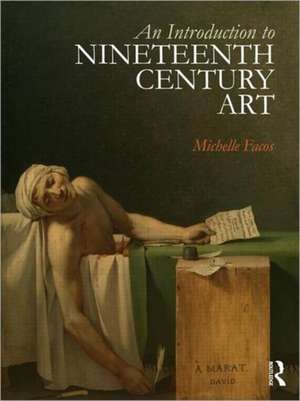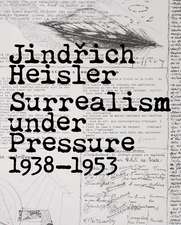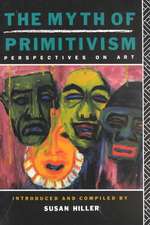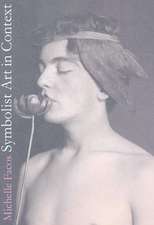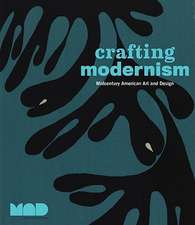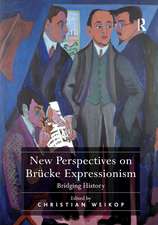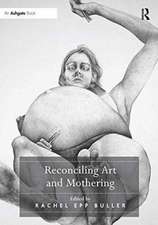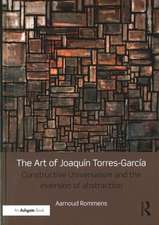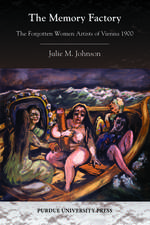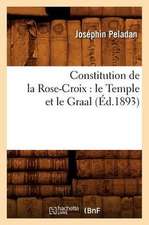An Introduction to Nineteenth-Century Art
Autor Michelle Facosen Limba Engleză Paperback – 21 mar 2011
| Toate formatele și edițiile | Preț | Express |
|---|---|---|
| Paperback (1) | 370.32 lei 3-5 săpt. | +45.06 lei 4-10 zile |
| Taylor & Francis – 21 mar 2011 | 370.32 lei 3-5 săpt. | +45.06 lei 4-10 zile |
| Hardback (1) | 779.07 lei 6-8 săpt. | |
| Taylor & Francis – 22 mar 2011 | 779.07 lei 6-8 săpt. |
Preț: 370.32 lei
Nou
70.87€ • 73.72$ • 58.51£
Carte disponibilă
Livrare economică 25 martie-08 aprilie
Livrare express 08-14 martie pentru 55.05 lei
Specificații
ISBN-10: 0415780721
Pagini: 464
Ilustrații: 272 colour illustrations
Dimensiuni: 189 x 246 x 23 mm
Greutate: 1.04 kg
Ediția:1
Editura: Taylor & Francis
Colecția Routledge
Locul publicării:Oxford, United Kingdom
Public țintă
AS/A2 and UndergraduateCuprins
Acknowledgements
Illustrations
Introduction
Chapter 1: A Time of Transition
Social Critique
Moral Reform
Monarch as Model
Era of Change
Age of Discovery
Grand Tour
Antiquity Becomes Fashionable
Neoclassical Style
Calm Grandeur in Dante
Conclusion
Chapter 2: Classical Influences and Radical Transformations
Neoclassicm in Britain
Neoclassicism Becomes Popular
The Elgin Marbles
Homer Illustrations
Political Instability in France
D’Angiviller’s Reform Program
Roman Virtue
Neoclassical Eroticism
Neoclassical Sculpture
Neoclassicism in Denmark and the German States
Conclusion
Chapter 3: Re-presenting Contemporary History
Legitimizing Contemporary History
Painting of Contemporary History in France
Political Instability
New Hero for a New Republic
Equestrian Portraits: Rulers on Horseback
Neoclassicism made Ridiculous
Legitimizing Bonaparte
Transgressive History Painting
Representing Republican Values
Establishing Museums
Conclusion
Chapter 4: Romanticism
Origins and Characteristics
Burke’s Sublime
Blake and the Imagination
Nature Mysticism
Goya: Ambiguity and Modernism
Abnormal Mental States
Sculpture
Escape to the National Past: England
Medievalism in France: Troubadour Style
Medievalism in the German States
The Nazarenes
Conclusion
Chapter 5: Shifting Focus: Art and the Natural World
New Attitudes Toward Nature
Academic Landscape Tradition
Nature and the Sublime
The Picturesque
Turner: From Convention to Innovation
Constable: Conservative Nostalgia
Naturalism and Tourism
Friedrich: Patriotism and Spirituality
Feminization of Nature
Hudson River School
American West
Conclusion
Chapter 6: Colonialism, Imperialism, Orientalism
Documenting Distant Lands and People
Colonial Citizens
Picturing Slavery
Native Americans: Ideal or Foe?
Orientalism Emerges
Orient Imagined
Delacroix’s Orientalism
Orientalist Sculpture
International Exhibitions
Conclusion
Chapter 7: New Audiences, New Approaches
Modernism, Urbanization, Instability
Bourgeois Morality and the Separation of Spheres
Biedermeier and the Emergence of Middle Class Culture
Biedermeier Portraiture
Biedermeier Cityscapes
Biedermeier Peasant Painting
Biedermeier Landscape
Biedermeier History Painting
Golden Age in Denmark
Biedermeier in Russia
Mid-Century America
Victorian Painting
Pre-Raphaelite Brotherhood
Municipal Art Associations
Conclusion
Chapter 8: Photography as Fact and Fine Art
"Invention" of Photography
Documenting Current Events
Social Reform
Photography and Science
Portraiture
Landscape
Travel
Photography as a Fine Art
Pictorialism and New Technologies
Conclusion
Chapter 9: Realism and the Urban Poor
Contrasting Responses to 1848
Urban Migration
Social Unrest
Alcoholism
Female Suicide
Middle Class Working Women
Poor Working Women
Prostitution
Documenting Work
Idealized Labor
Oppressed Workers
Reforming the Poor
Conclusion
Chapter 10: Imagined Communities: Views of Peasant Life
Peasant Identity
Peasant Imagery Before 1848
Courbet’s Burial: More than Just a Funeral
Academically Acceptable Peasant Images
Powerful Peasants: Heroic or Threatening?
Pitiable Peasants
Idealized Peasants
Grim Realities
Conclusion
Chapter 11: Crisis in the Academy
The Importance of Titles
History Painting and Autobiography: Courbet
The Situation of Women Artists
Salon of 1863 and Salon des Refuses
Salon of 1865
Sculpture and Politics
Foreign Artists in Paris
Art Academies in Austria and the German States
Menzel and Academic Realism
World’s Fairs
Conclusion
Chapter 12: Impressionism
Truth
Haussmannization
New Paris
Flâneurs and Boulevardiers
Experimentation
Old Paris
Bourgeois Leisure
Café Society
Suburban Industry
Suburban Leisure
Natural and Acquired Identities
Gare Saint Lazare
Seaside Resorts
Beaches, Bathing, and Hygiene
Cézanne and Postimpressionism
The Macchiaioli
Conclusion
Chapter 13: Symbolism
Symbolist Precursors
Animate Nature
Music
Music and Genius
Rodin: Abstract Ideas in Human Form
Pessimistic Withdrawal
Women: Angels or Whores?
Imagination Out of Control
Virgin Mothers
Social Pessimism
Memory and Degeneration
Gauguin: Seeking But Never Finding
Van Gogh: Expressing Nature
Genius and Creativity
Beyond the Five Senses
Conclusion
Chapter 14: Individualism and Collectivism
Artists’ Colonies
Pont Aven
Worpswede
Skagen
Artist Organizations
Society of Independent Artists
The Nabis
Rose + Croix
Les XX
National Identity
France : Monet’s Cathedrals
Russia
Serbia
Poland
Finland
Hungary
Conclusion
Epilogue: Looking Toward the Twentieth Century
Bibliography
Glossary
Index
Notă biografică
Michelle Facos teaches art history at Indiana University, Bloomington. Her research explores the changing relationship between artists and society since the Enlightenment and issues of identity. Prior publications include Nationalism and the Nordic Imagination: Swedish Painting of the 1890s (1998), Art, Culture and National Identity in Fin-de-Siècle Europe, co-edited with Sharon Hirsh (2003), and Symbolist Art in Context (2009).
